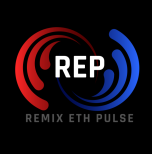Are Stablecoins the Next Goldmine or a Money Pit?
From Wall Street investment banks to tech companies in the Bay Area, and from financial giants to payment platforms in Asia, an increasing number of enterprises are focusing on the same business — the issuance of stablecoins.
Under the scale effect, the marginal issuance cost for stablecoin issuers is zero, resembling a risk-free arbitrage game in their eyes. In the current global interest rate environment, the yield differential is incredibly enticing. Stablecoin issuers only need to deposit users’ dollars into short-term U.S. Treasury bonds, earning billions of dollars annually with a steady income of 4-5% from the interest differential.
Tether and Circle have already proven that this path is feasible. As stablecoin regulations are gradually being implemented in various regions, the compliance pathway has also become clearer, prompting more enterprises to try their hand, including FinTech giants like PayPal and Stripe entering the fray quickly. Not to mention, stablecoins inherently possess the ability to integrate with payment systems, cross-border settlements, and even Web3 scenarios, offering vast imaginative possibilities.
Stablecoins have already become a battleground for global financial companies.
However, therein lies the problem; many people only see the seemingly “risk-free” arbitrage logic of stablecoins, neglecting that this is a capital-intensive business with high entry barriers.
If a company wants to legally and compliantly issue a stablecoin, how much will it actually cost?
This article will dissect the true costs behind a stablecoin, revealing whether this seemingly easy arbitrage business is worth pursuing.
The Costs Behind Stablecoin Issuance
In many people’s impressions, issuing a stablecoin is merely about creating an on-chain asset, and from a technical perspective, it seems to have a low threshold.
However, truly launching a stablecoin with a compliant identity aimed at global users involves a far more complex organizational structure and system requirements than one might imagine. It not only involves financial licenses and audits but also requires substantial capital investments across various dimensions, including asset custody, reserve management, system security, and ongoing maintenance.
From the perspective of cost and complexity, the overall construction requirements are comparable to those of a medium-sized bank or a compliant trading platform.

The first hurdle faced by stablecoin issuers is the establishment of a compliance system. They often need to simultaneously respond to regulatory requirements from multiple jurisdictions, obtaining key licenses such as the U.S. MSB, New York BitLicense, EU MiCA, and Singapore VASP. Behind these licenses are detailed financial disclosures, anti-money laundering mechanisms, and ongoing monitoring and compliance reporting obligations.
Comparatively, stablecoin issuers may face annual compliance and legal expenses totaling tens of millions of dollars just to meet the most basic cross-border operational qualifications, similar to those of a medium-sized bank with cross-border payment capabilities.
In addition to licenses, the establishment of KYC/AML systems is also a mandatory requirement. Project teams typically need to engage mature service providers, compliance consultants, and outsourcing teams to continuously operate customer due diligence, on-chain reviews, address blacklisting management, and a complete set of mechanisms.
In today’s increasingly stringent regulatory environment, without the capability to establish robust KYC and transaction review processes, it is nearly impossible to gain entry into major markets.
Market analysis indicates that the total costs for HashKey to apply for a Hong Kong VASP license can reach HKD 20 million to 50 million, and at least two regulatory officers (ROs) must be appointed, alongside collaboration with the top three accounting firms, incurring costs several times higher than traditional industries.
Beyond compliance, reserve management is also a key cost in stablecoin issuance, encompassing both asset custody and liquidity arrangements.
On the surface, the asset-liability structure of stablecoins does not appear complex: users deposit dollars, and issuers purchase equivalent short-term U.S. Treasury bonds.
However, once the reserve scale exceeds $1 billion or even $10 billion, the operational costs behind it will rapidly escalate. Just the custody of funds alone could cost tens of millions of dollars annually; while Treasury transactions, clearing processes, and liquidity management not only incur additional costs but also heavily rely on the collaboration and execution of professional teams and financial institutions.
Moreover, to ensure an “immediate redemption” user experience, issuers must prepare sufficient liquidity off-chain to meet substantial redemption requests during extreme market conditions.
This configuration logic is quite close to the risk reserve mechanisms of traditional money market funds or clearing banks, far from the simplicity of “smart contract lock-ups.”
To support this structure, issuers must also build highly stable and auditable technical systems covering critical financial processes both on-chain and off-chain. Typically, this includes smart contract deployment, multi-chain minting, cross-chain bridge configuration, wallet whitelisting mechanisms, clearing systems, node operations, security risk management systems, and API integrations.
These systems must not only support large-scale transaction processing and fund flow monitoring but also be scalable to accommodate regulatory changes and business expansion.
Unlike the “lightweight deployment” of typical DeFi projects, the underlying systems of stablecoins effectively act as a “public settlement layer,” with technology and operational costs consistently in the millions of dollars annually.
Compliance, reserves, and systems are the three foundational projects of stablecoin issuance, collectively determining whether the project can sustainably develop over the long term.
Essentially, stablecoins are not merely a technological tool product; they represent a financial infrastructure combining trust, compliance structure, and payment capabilities.
Only those enterprises that truly have cross-border financial licenses, institutional-grade clearing systems, on-chain and off-chain technical capabilities, and controllable distribution channels have the potential to operate stablecoins as a platform-level capability.
Consequently, before deciding whether to enter this field, companies must first assess whether they have the ability to build a complete stablecoin system, including: Can they obtain ongoing recognition from multiple regulatory authorities? Do they have an in-house or trusted custodial fund system? Can they directly control wallet and trading platform resources to truly facilitate circulation?
This is not an easy startup opportunity, but rather a hard battle that requires high levels of capital, systems, and long-term capabilities.
After Issuing Stablecoins, What Next?
Completing the issuance of stablecoins is merely the beginning.
Regulatory approvals, technical systems, and custodial structures are merely prerequisites for entry. The real challenge is how to make them circulate.
The core competitiveness of stablecoins lies in whether “people use them.” Only when stablecoins are supported by trading platforms, integrated by wallets, accessed by payment gateways and merchants, and ultimately used by users can they be said to have truly achieved circulation. However, there are high distribution costs awaiting them on this road.
According to insights from Beating, in a joint digital asset self-custody service provider, Safeheron, the stablecoin industry chain diagram reveals that the issuance of stablecoins is just the starting point of the entire chain, and in order for stablecoins to circulate, attention must be directed toward downstream.

Taking USDT, USDC, and PYUSD as examples, three distinctly different circulation strategies are clearly visible:
USDT initially relied on gray areas to build an unreplicable network effect, quickly securing a standard market position due to its first-mover advantage;
USDC primarily relies on channel partnerships within a compliant framework, gradually expanding through platforms like Coinbase;
While PYUSD, despite being backed by PayPal, still needs to rely on incentive measures to boost TVL and consistently faces challenges penetrating real usage scenarios.
Though their paths differ, they all reveal the same fact — the competition for stablecoins lies not in issuance, but in circulation. The key to success or failure lies in the ability to build a distribution network.
1. The Unreplicable First-Mover Structure of USDT
The birth of USDT stemmed from the real challenges faced by cryptocurrency trading platforms during that era.
In 2014, the Hong Kong-based cryptocurrency trading platform Bitfinex was rapidly expanding its global user base. Traders wanted to trade in U.S. dollars, but the platform consistently lacked stable channels for dollar deposits.
The cross-border banking system was hostile toward cryptocurrencies, making it difficult for funds to flow between Mainland China, Hong Kong, and Taiwan. Accounts were frequently shut down, and traders constantly faced the risk of losing access to funds.
Against this backdrop, Tether was born. It initially operated on the Bitcoin Omni protocol, with a simple and direct logic: users wired dollars to Tether’s bank account, and Tether then issued an equivalent amount of USDT on-chain.
This mechanism bypassed traditional banking clearing systems, allowing “U.S. dollars” to circulate across borders 24 hours a day for the first time.
Bitfinex was Tether’s first significant distribution node, and more importantly, both were essentially operated by the same group of people. This deep binding structure allowed USDT to rapidly gain liquidity and use cases early on. Tether provided a compliance-ambiguous but efficient dollar channel for Bitfinex, with mutual collusion, information symmetry, and aligned interests.
Technically, Tether is not complex, but it solved the problem of fund inflow and outflow for crypto traders, becoming critical in capturing user mindshare.
As capital market volatility increased in 2015, the appeal of USDT surged. Users in many non-dollar regions began seeking dollar alternatives to bypass capital controls, and Tether provided them with a “digital dollar” solution that required no account or KYC, usable with just an internet connection.
For many users, USDT became not just a tool, but a means of hedging.
The ICO boom of 2017 was a pivotal moment for Tether to achieve product-market fit (PMF). After the Ethereum mainnet launched, the explosion of ERC-20 projects led trading platforms to pivot toward crypto-asset trading pairs, and USDT quickly became the “dollar substitute” in the altcoin market. By using USDT, traders could move freely between platforms like Binance and Poloniex to complete trades without repeatedly transferring funds in and out.
Interestingly, Tether has never actively spent money on promotions.
Unlike most stablecoins that adopted subsidy strategies to expand market share in their early stages, Tether has never actively subsidized trading platforms or users for using its services.
On the contrary, Tether charges a 0.1% fee for each minting and redemption, with a minimum redemption threshold of $100,000, plus an additional verification fee of 150 USDT.
This charging mechanism essentially constitutes a “reverse promotion” strategy for institutions wishing to directly access its system. It is not marketing a product, but rather setting a standard. The cryptocurrency trading network has long been built around USDT, and any participant wishing to access this network must gravitate toward it.

After 2019, USDT has almost become synonymous with “on-chain dollars.” Despite facing regulatory scrutiny, media skepticism, and reserve controversies, USDT’s market share and circulation volume have continued to rise.
By 2023, USDT had become the most widely used stablecoin in non-U.S. markets, particularly in global southern countries. In regions with high inflation, such as Argentina, Nigeria, Turkey, and Ukraine, USDT is used for wage settlements, international remittances, and even as a substitute for local currencies.
Tether’s real moat has never been its code or asset transparency, but rather the trust pathways and distribution networks it established early on within the Chinese-speaking crypto trading community. This network started in Hong Kong, using Greater China as a springboard, gradually extending to the entire non-Western world.
This “first-mover is the standard” advantage also means that Tether no longer needs to prove its worth to users; rather, the market must adapt to the circulation system it has already established.
2. Why Circle Relies on Coinbase
Unlike Tether’s naturally emerging path in gray areas, USDC was designed from the outset to be a standardized and institutionalized financial product.
In 2018, Circle partnered with Coinbase to launch USDC, aiming to create a “on-chain dollar” system for institutional and mainstream users within a compliant and controlled framework. To ensure governance neutrality and technical collaboration, both parties held 50% of the shares, establishing a joint venture called Center responsible for USDC’s governance, issuance, and operations.
However, this joint governance model does not address the critical problem — how does USDC truly circulate?
This article is reproduced in collaboration with: Rhythm

